History
In a strategic position to control traffic through the area, the historiographical tradition associates the events of Angera with the Visconti family and its consolidation after the victory in the Battle of Desio in 1277, celebrated in the frescos of the Sala di Giustizia.
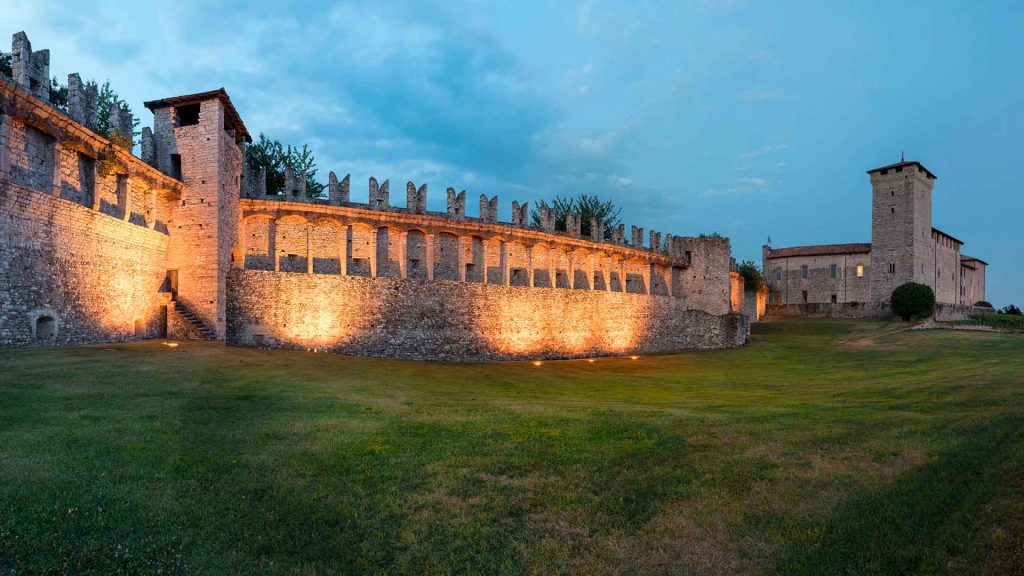
With the Visconti, the Rocca was at the centre of important reconstruction and enlargement works that were to be protracted for more than a century.
In the period of the Ambrosian Republic, the Council of Nine Hundred of the city of Milan ratified the acquisition of Angera, of the fortress and its parish from Vitaliano I Borromeo for the sum of 12,800 imperial lire on 18th January 1449.
The Rocca di Angera thus became the dwelling and the symbol of the political structure of the family, to which it still belongs today.
In 1623, when Cardinal Federico Borromeo was honoured by Phillip IV of Spain with the title of Marquisate of Angera, the fortress was in a state of considerable abandonment. The expert that the cardinal had sent to the site suggested proceeding with the essential repairs, but a short time later, at the initiative first of Giulio Cesare III (1593-1672) and then of Antonio Renato Borromeo (1632-1686), the Rocca was extensively restored. In the second half of the 17th century, leading Milanese painters were used to carry out the decoration (among others, the Santagostino brothers, Antonio Busca and Filippo Abbiati). In a climate of stubborn opposition to the Spanish Governorship, the Borromeos, with the creation of the cycle of canvases devoted to the Fasti Borromeo [Splendours of the Borromeo Family] and the portraits of historical personalities of the dynasty (1673-1685), made the Rocca one of the symbolic monuments of the family’s history, intended to illustrate the antiquity and power of the family.
In recent years the Rocca di Angera has been the object of meticulous restoration work at the wishes of Princess Bona Borromeo, who has wanted to return the Castle to its former splendour and give visitors access to its sophisticated collections, creating the largest Museum of Dolls and Toys in Europe.
The latest restoration campaign of the Ala Scaligera took place in 2017, and it here that contemporary art projects take shape today.
What to see
The Historic Rooms
The wonderful colours of 14th-century frescos
The spectacular Rocca di Angera is the perfectly harmonious accumulation of five different constructions, built starting from the 11th century and until the 17th: the Torre Castellana, the Ala Scaligera, the Ala Viscontea, the Torre di Giovanni Visconti and the Ala dei Borromeo.
It is impossible not to be astounded by the dimensions and grandeur of this building and by the solemnity of the Sala del Buon Romano, the Sala delle Mitologia, the Sala delle Ceremonie, the Sala di San Carlo and the Sala dei Fasti Borromeo, where large canvases, portraits and furnishings take you back to ancient times.
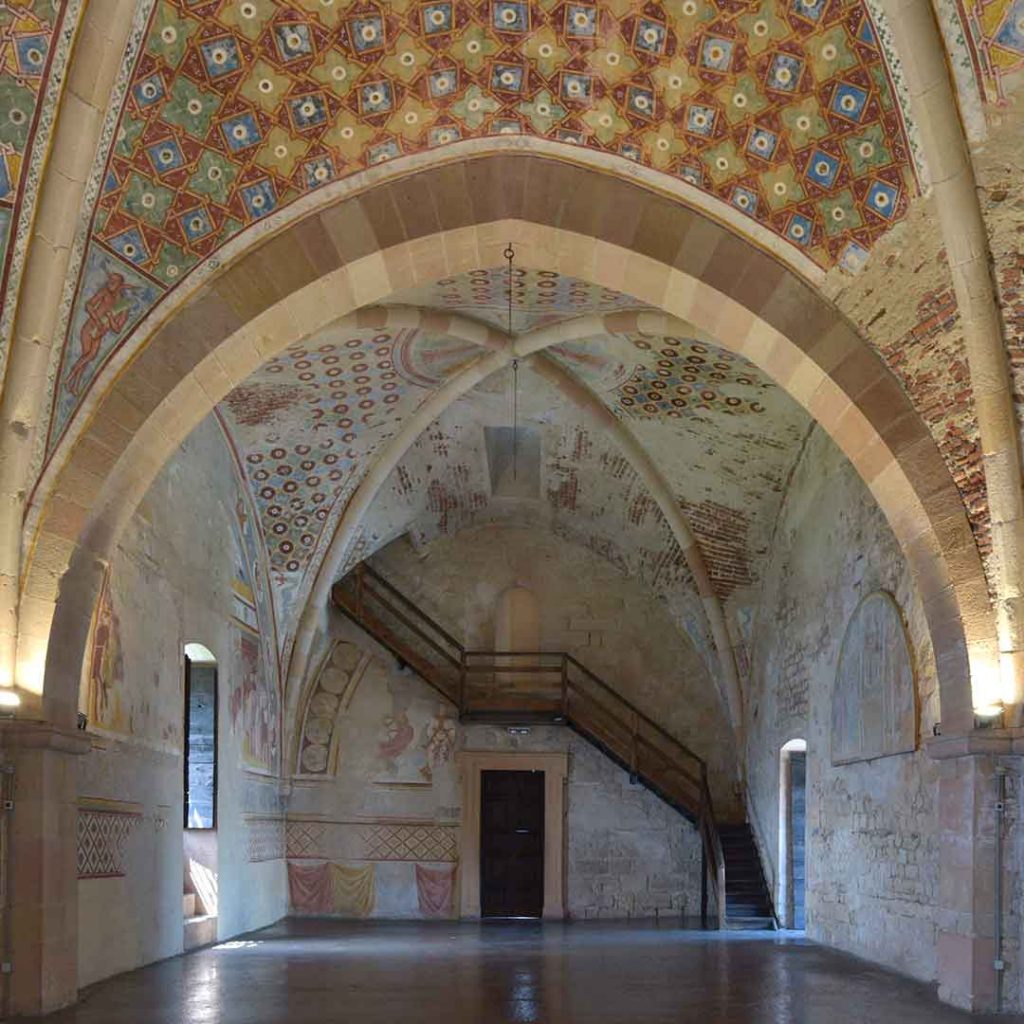
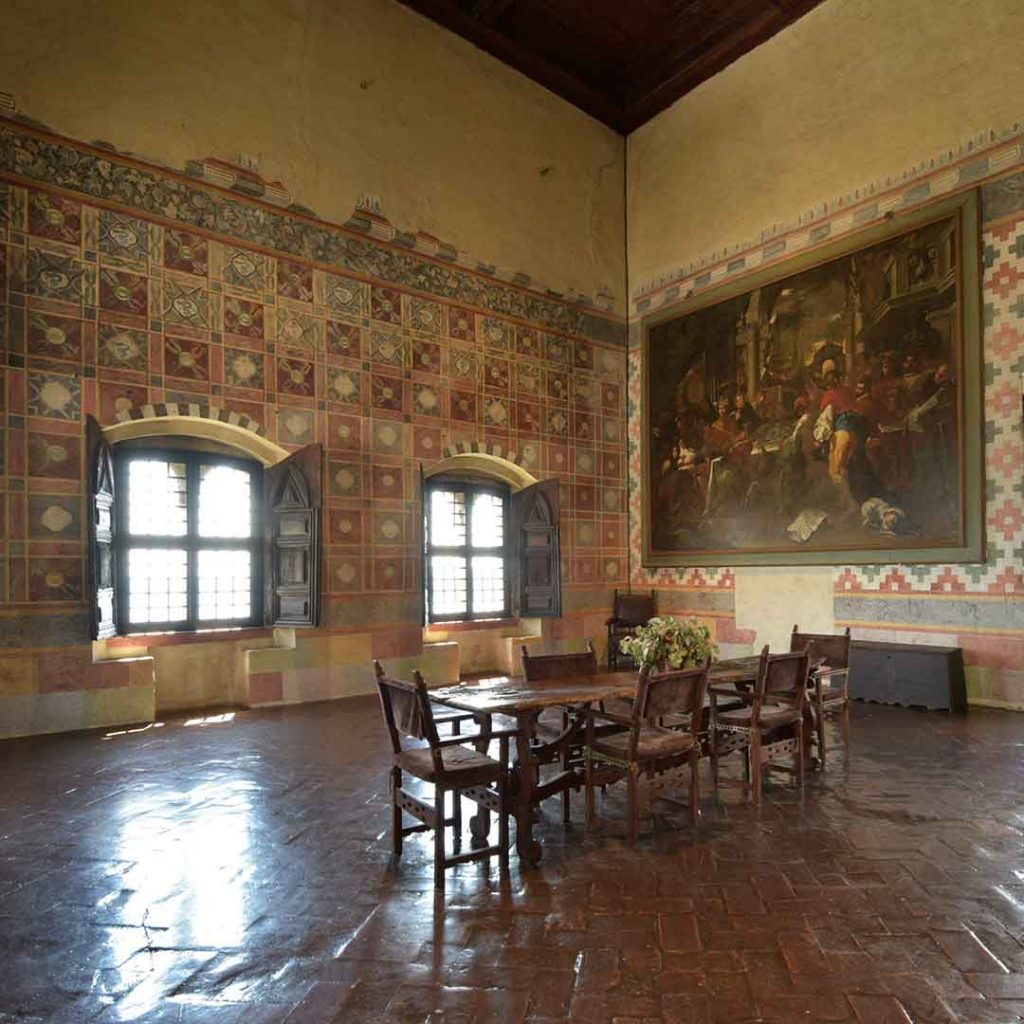
The Sala della Giustizia [Justice Room] is worth the visit alone; it was entirely frescoed soon after the Battle of Desio in 1277 by an anonymous master, who takes his conventional name, the “Master of Angera”, from this endeavour. The cycle of paintings is structured into three overlapping registers and the main historical narration of the exploits of Ottone Visconti against Napoleone della Torre is developed in the main one.
In the Sala delle Ceremonie [Ceremonies Room] it is possible to admire a series of fragments of frescos from the first half of the 15th century coming from Palazzo Borromeo in Milan, which were brought to the Rocca di Angera in 1946 after bombing destroyed the palazzo in the city. Created by the school of Michelino da Besozzo, they are one of the most important examples of Lombard Late Gothic painting with non-religious subjects.
What to see
The Museum of Dolls and Toys
Special lighting and sound create a visiting experience suspended in a magical reality
Founded in 1988 by Princess Bona Borromeo Arese, it is distinguished for the quality, variety and rarity of the collection, making it the largest in Europe in the sector.
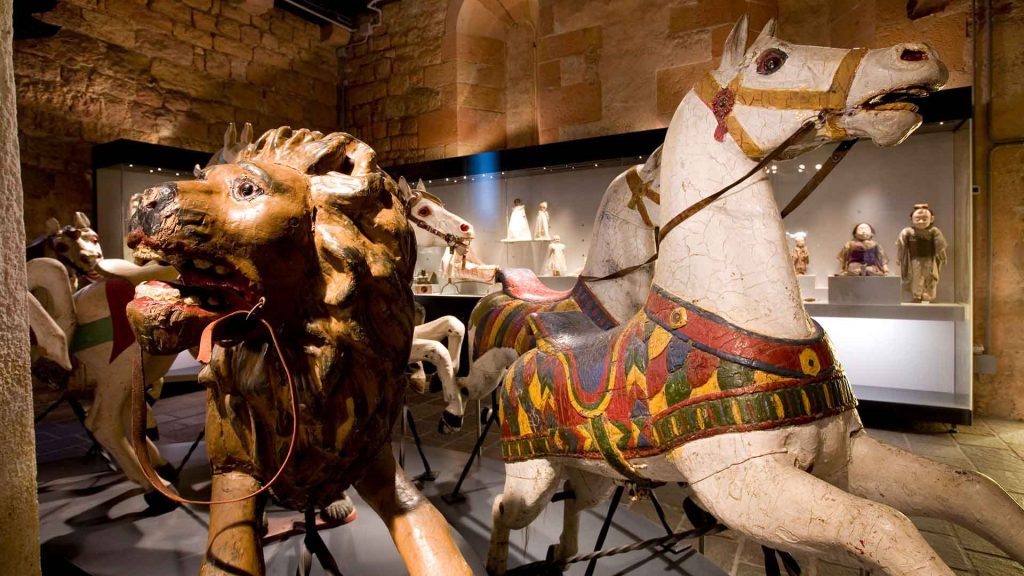
The Museum is structured along 12 rooms located in the Ala Viscontea and Borromea, alongside two single-themed sections: one devoted to dolls coming from non-European cultures and the other to the automatons of the 19th and 20th centuries.
Over one thousand dolls made between the 18th century and today, clothed and accompanied by precious outfits. On display there are also toys and models of furniture items coming from the collection of Roberta della Seta Sommi Picenardi: masterpieces by skilled craftsmen, who executed these prototypes with the same expertise that they used for the actual furniture items.
The automaton section, inaugurated in 2002, brings together specimens created above all between 1880 and 1920, produced mostly in France and Germany: true animated wonders, the movement of which was accompanied by musical airs, often taken from well known operas.
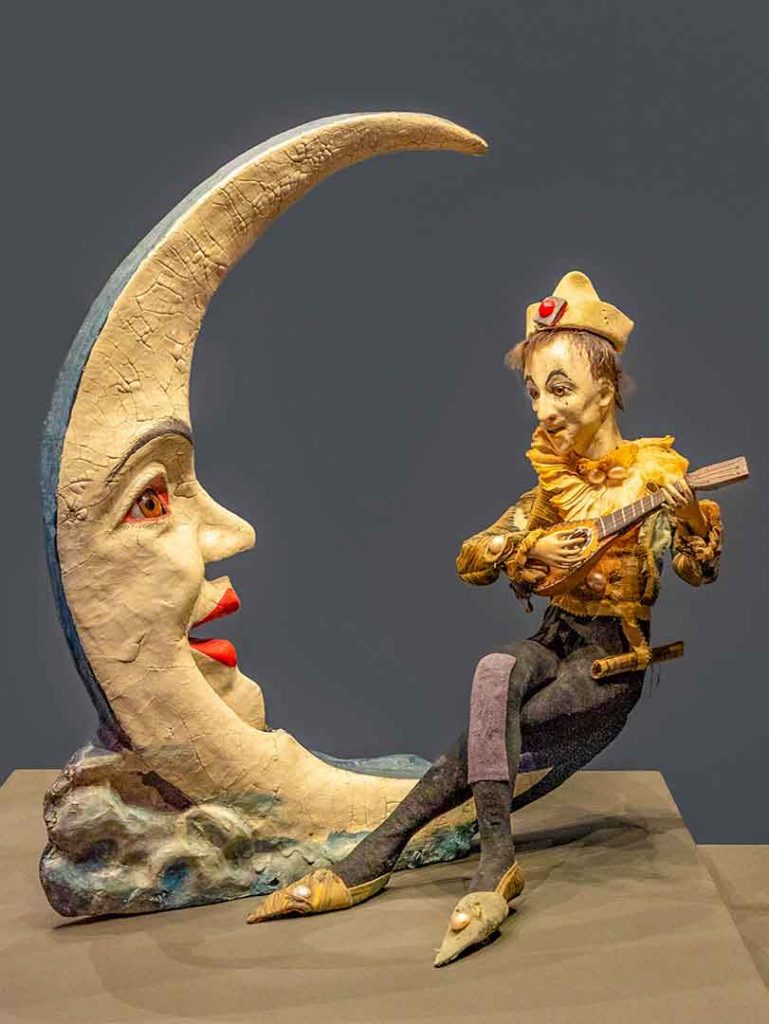
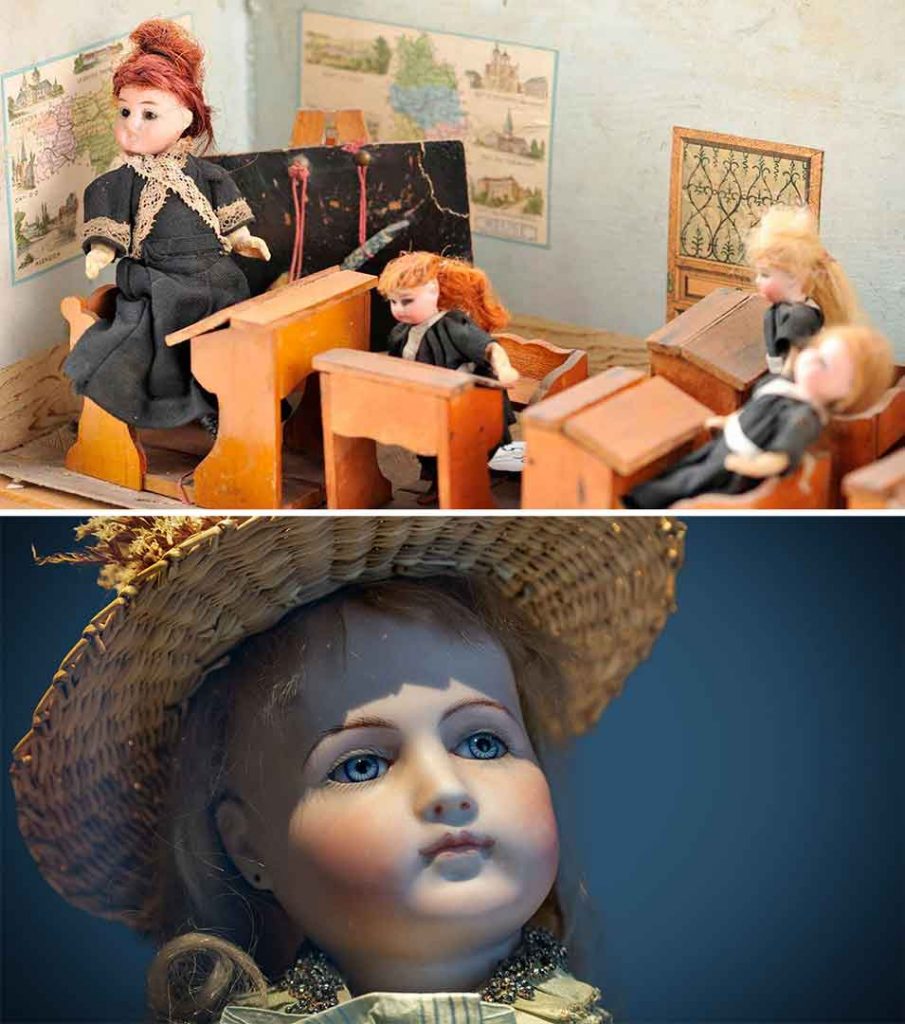
What to see
Ala Scaligera
“Passion for the beautiful and for cultural innovation is a commitment to future generations.”
Vitaliano Borromeo
It is the oldest construction of the Rocca and dates back to the first half of the 13th century, lodged between the walls and the remains of the oldest tower along the northern side of the Castle.
The Ala Scaligera takes its name from the heraldic motifs on the large walls, created at the wishes of its then owner Bernabò Visconti in honour of his consort Regina della Scala. The decorative plan is repeated in the same way in all the rooms.
After a lower band of around 60 cm, faux boiserie painted, there emerge black and white rhombuses alternating between floral motifs with the Biscione [serpent] of the Visconti family and the Scala [ladder], symbol of the family of the same name. The decorative apparatus is concluded in the upper edge, with illusionistic decorated beams that probably matched the ancient wooden ceiling.
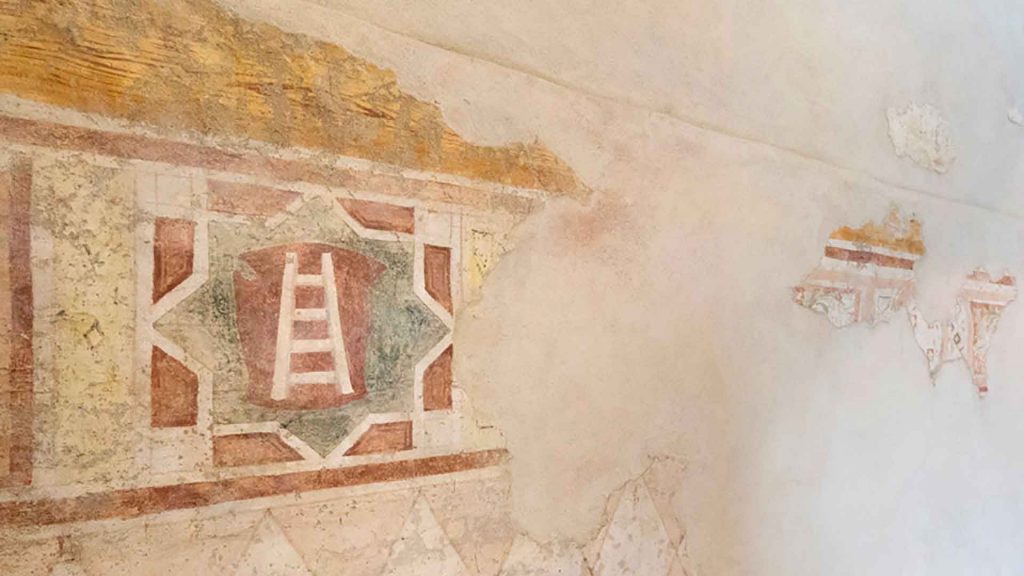
Between 2015 and 2017 the entire wing underwent a meticulous conservative restoration. Today it is a space devoted to exhibitions of contemporary art: projects of artistic creativity that take shape inside six rooms, in a stimulating dialogue between past and present.
2018 – 1st edition, “Continuum”, in collaboration with Galleria Massimo Minini, curated by Antonio Grulli.
2019 – 2nd edition, “Quaestio de aqua et terra. (Another) Question of the water and the land”, in collaboration with Galleria Lia Rumma, curated by Andrea Viliani.
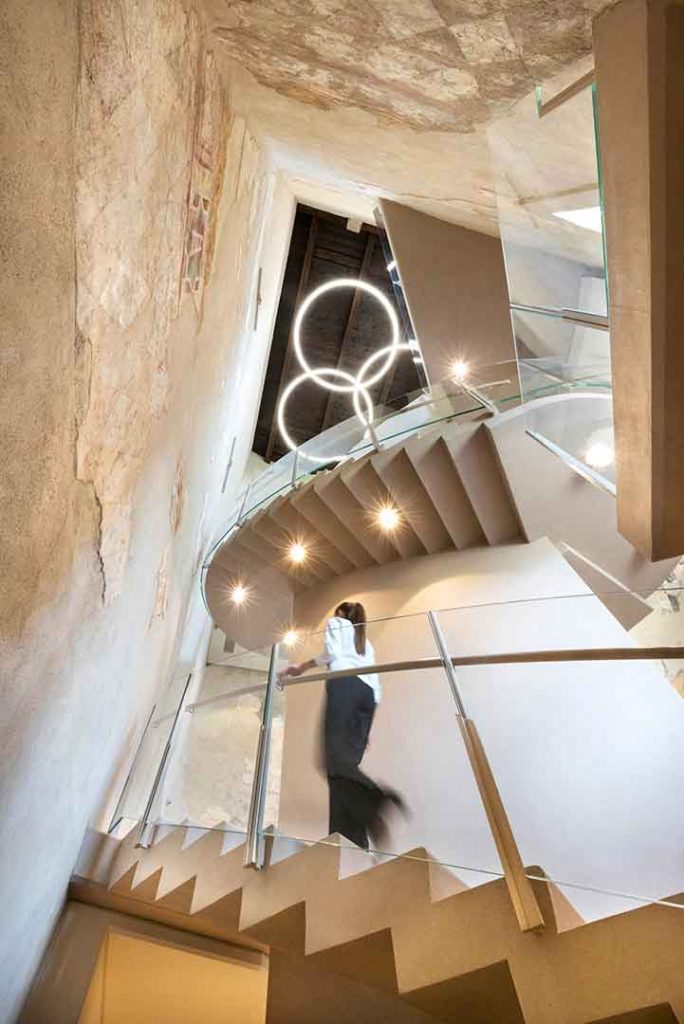
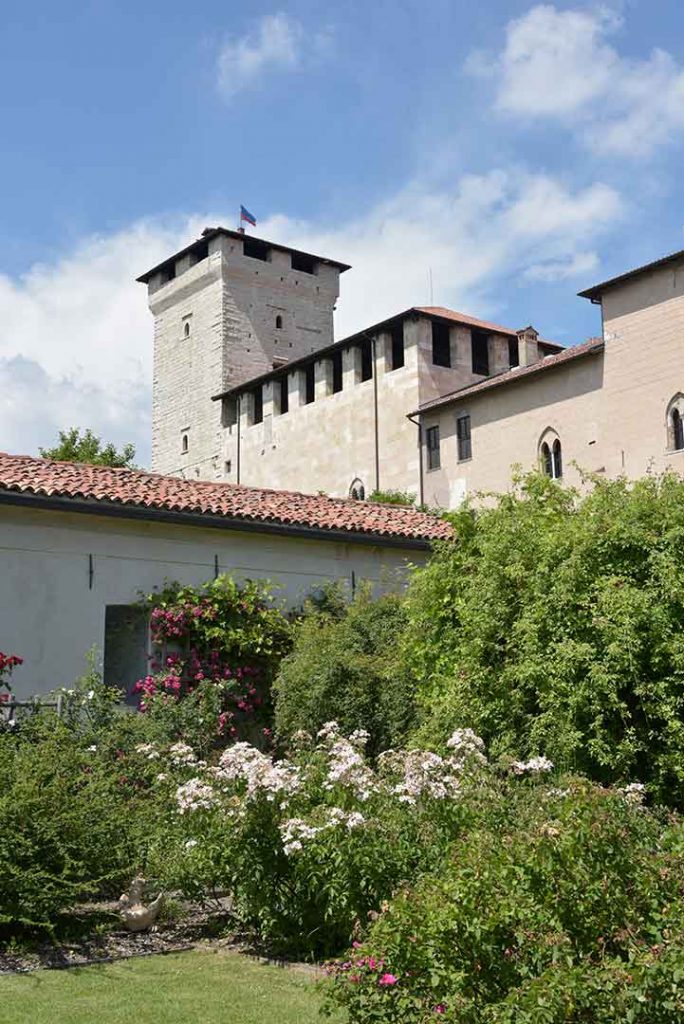
What to see
The Medieval Garden
A garden suspended in an atmosphere of peace
Created in 2008 after a carefully prepared study based on miniated codices and period documents, the garden harkens back to what could have been the original green space of the Rocca.
A timeless place, where beauty means simplicity and spontaneity, and where flowers and medicinal herbs follow the life cycles of nature and the seasons.
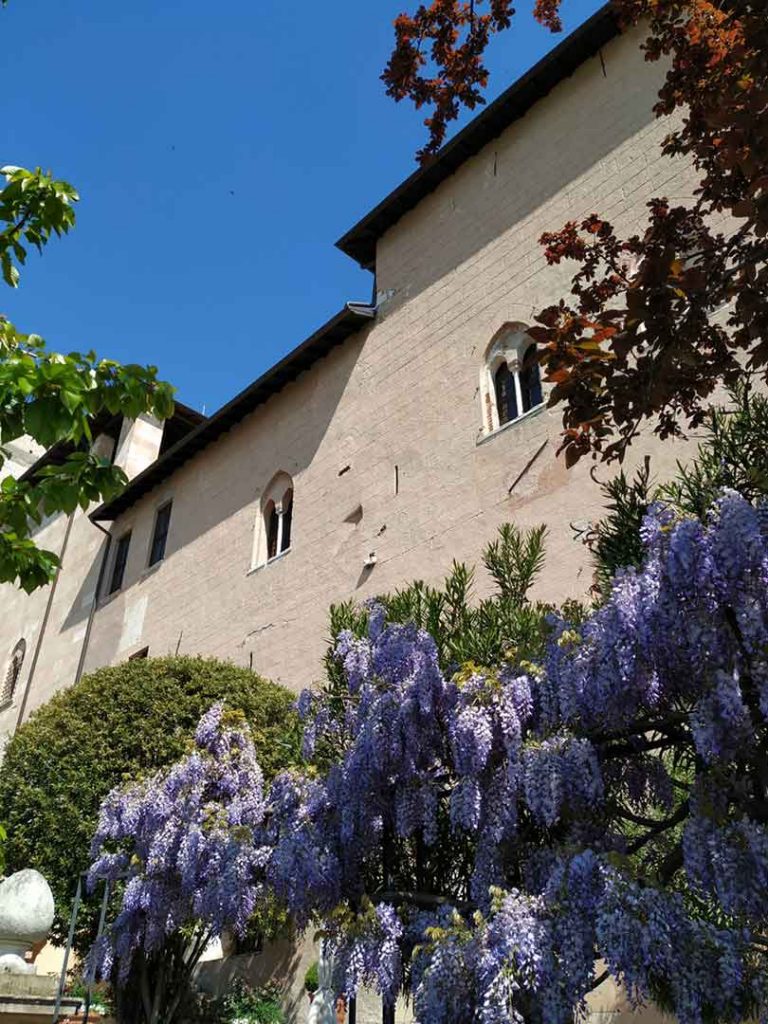
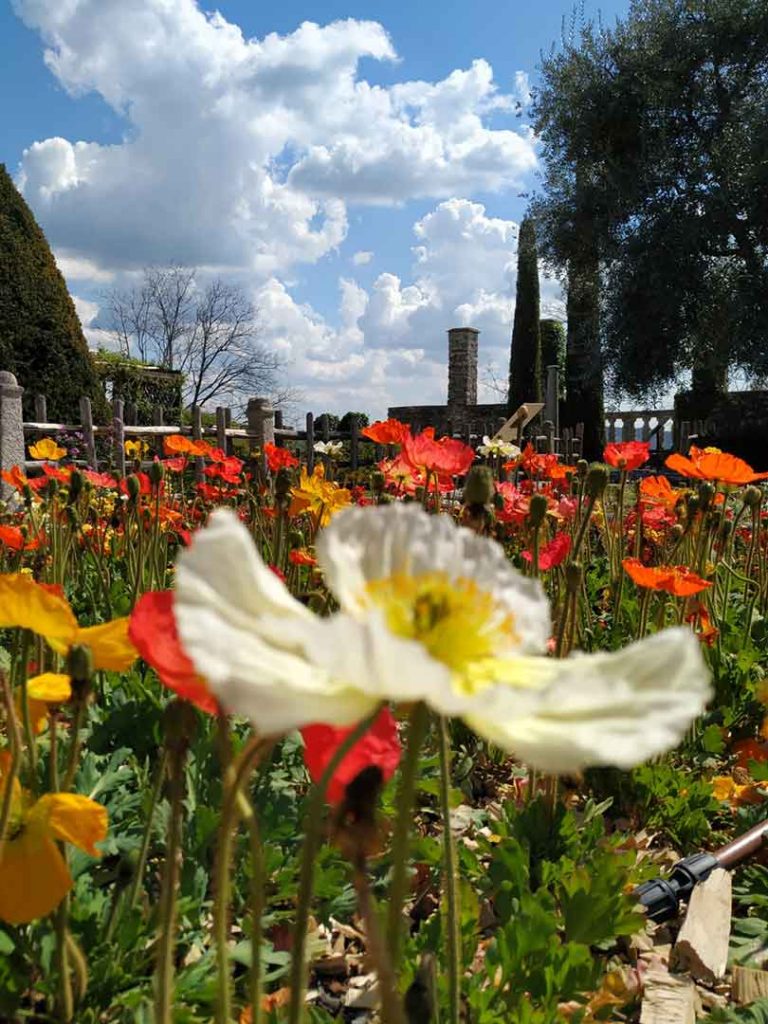
The medieval garden is organised into various zones.
A grove of hazels, cypresses and holm oaks runs alongside a small brook, which it accompanies to the pond, where irises bloom with goldfish swimming around them. The area comes alive in the Garden of small herbs, which gathers together medicinal herbs, tinctorial plants and useful grasses and flowers in twelve beds, grouped on the basis of their function. In all it has around 100 species.
The rose garden is the heart of the Giardino dei Principi [Garden of Princes] and its shady pergolas constructed around a fountain. Listening to the sound of the water admiring the lake is an experience of relaxation and disconnection from a frenetic world. Perennial plants and flowers colour the garden throughout the year, also in the part of the Verziere where vegetables and aromatic herbs cultivated in raised beds are surrounded by azeruoli [Crataegus azarolus], quince, apple and pomegranate trees.
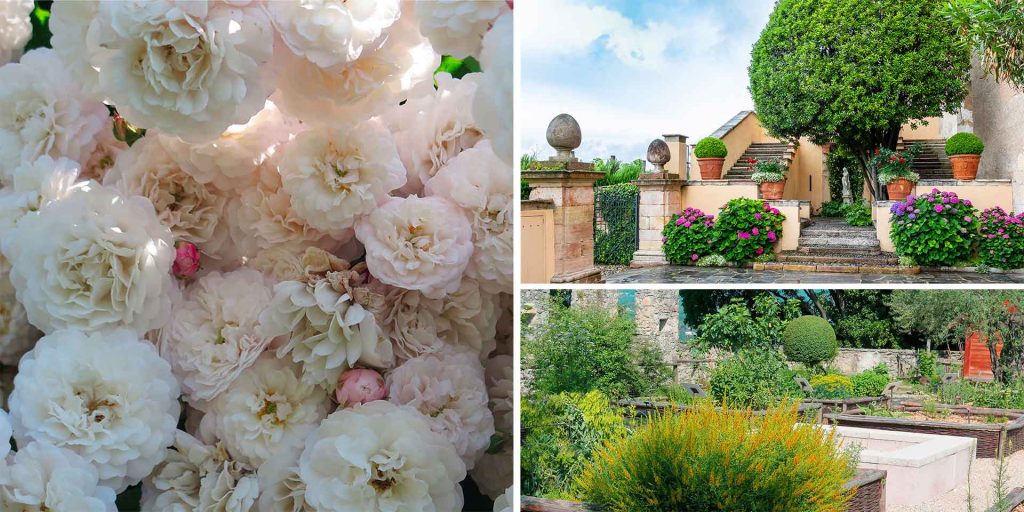
What to see
Fantastic Utopias
EXHIBITION
Until September 27th, 2020
curated by Ilaria Bonacossa
in collaboration with Galleria Continua
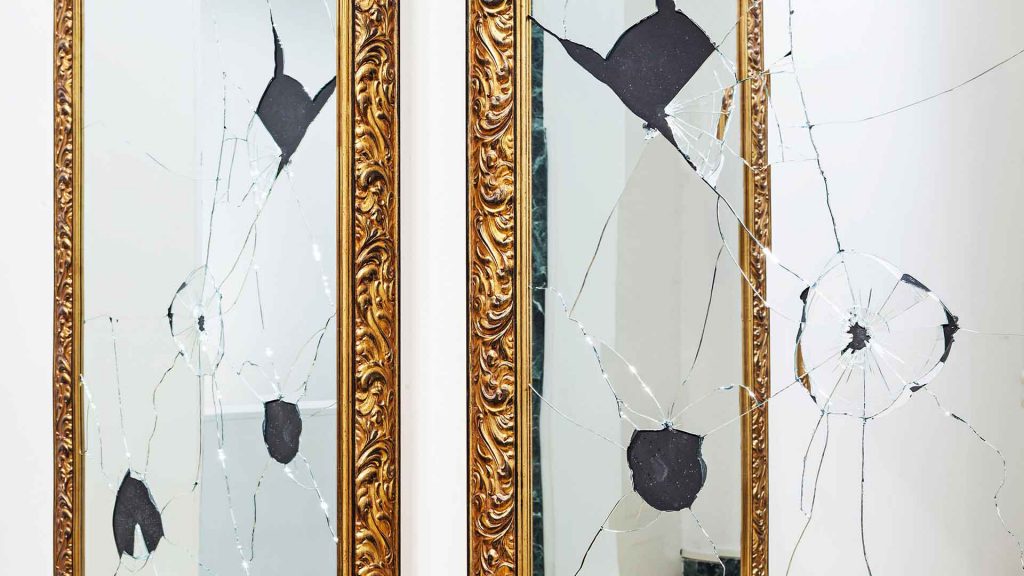
Artists: Jonathas De Andrade, Berlinde De Bruyckere, Carlos Garaicoa, Antony Gormley, Shilpa Gupta, Ilya e Emilia Kabakov, Zhanna Kadyrova, Sabrina Mezzaqui, Michelangelo Pistoletto, Ornaghi e Prestinari, Kiki Smith, Hiroshi Sugimoto, Pascale Marthine Tayou, Ai Wei Wei, Chen Zhen.
In the spaces of Ala Scaligera, the artworks of 15 international artists give rise in their diversity to unexpected and perhaps even magical images and objects, both seductive and frightening at the same time, able to take us to alternative universes far removed from verosimilitude.
To imagine an alternative reality is the first step towards reaching it
In this exhibition, curated by Ilaria Bonacossa in collaboration with Galleria Continua, the protagonist is the fantastic. Relegated to the world of childhood ever since the 19th century, it has become the means to break with conventions and imagine what seems impossible and unknown.
AON is main partner of the exhibition.
The visit is included in the entrance ticket to the Rocca di Angera.
Info utili
Hours
The Rocca di Angera opens every day until November 1st 2020 with the following opening time:
• from Monday to Friday from 12am to 5.30pm – last enter | closure 6pm
• Saturday and Sunday from 10am to 5.30pm – last enter | closure 6pm
Ala Scaligera entrance (exhibition “Fantastic Utopias”):
• every day from 12am to 5.30pm – last enter | closure 6pm
Tickets
We recommend to purchase the tickets online in order to avoid queues at the ticket-office.
Tickets
| Adults Single | Youngs Single | Adults Group | Youngs Group | Baby | |
|---|---|---|---|---|---|
| Rocca di Angera | € 10 | € 6,5 | € 8,5 | € 6 | - |
| Rocca di Angera + Isola Bella | € 21 | € 10,5 | € 17 | € 10 | - |
| Rocca di Angera + Parco Pallavicino | € 16 | € 8,5 | € 13 | € 7,5 | € 3 |
| Rocca di Angera + Isola Bella + Isola Madre +Parco Pallavicino | € 35 | € 18,5 | € 29 | € 15 | € 3 |
| Download the pdf table with all prices | |||||
How to get there
By car
Autostrada dei Laghi motorway in the direction of Gravellona Toce, Sesto Calende exit, continuing along A-road SS 629 in the direction of Angera, where access to the Rocca is facilitated by the road signs for tourists.
A free car park is available opposite the entrance to the Rocca.
By train
Ferrovie dello Stato railway, Milan-Sempione line, Arona stop. The boat for Angera leaves from here. The Rocca can be reached on foot along a panoramic route uphill that takes around 15 minutes.
For further information: Navigazione Lago Maggiore – scheduled passenger service. Also available is a non-scheduled passenger service by motorboat.
By plane
Distance from the principal airports: Turin Caselle 135 km – Milan Malpensa 25 km – Milan Linate 85 km – Bergamo Orio Al Serio 110 km.
Vademecum Covid
• You are advised to arrive at the locations with a ticket already purchased online via the platform booking.isoleborromee
• In compliance with the safety rules, access to the sites may be limited.
• It is not possible to enter the sites if you have a high temperature (over 37.5°) or other symptoms of influenza and where hazardous conditions exist, such as coming from risk areas or in close contact with persons testing positively for the virus in the last 14 days or coming from abroad in the last 14 days.
• Access is only permitted if you are wearing a mask.
• You are advised to wash your hands frequently; hand sanitising gel dispensers are located at various points inside the sites.
• Always keep a distance of more than one meter from the other visitors and from the sites personnel.
• Luggage storage is not available.
• Inside the Parco Pallavicino, touching the cages, the enclosures and/or the facilities present inside the Park is prohibited. You are also advised not to touch the animals.
We thank you for respecting all the indications on the signs and given by the supervisory personnel.
Terre Borromeo
A story of love, protection and respect that has lasted for six centuries.
Who we areHelpful Tips
Hours
-
Isola Bella
-
Isola Madre
-
ROCCA DI ANGERA
-
PARCO PALLAVICINO
- Buy tickets, guided tours and much more safely and quickly directly online.
How to get
- Terre Borromeo is easily accessible! They are only an hour and a half from Milan and easily reachable from the main airports. Find out how to reach them by car, train and how to book the ferry that will take you to the islands.
What to see
-
Isola Bella
- Palazzo Borromeo +
- The Italian-style garden +
-
Isola Madre
- Palazzo Borromeo +
- The English-style garden +
-
Rocca di Angera
- The Historic Rooms +
- The Museum of Dolls and Toys +
- Ala Scaligera +
-
Parco Pallavicino
- The fauna +
- The flora +
-
Parco del Mottarone
- Mottarone Adventure Park +
- Bar Stazione +
- Rifugio Genziana +


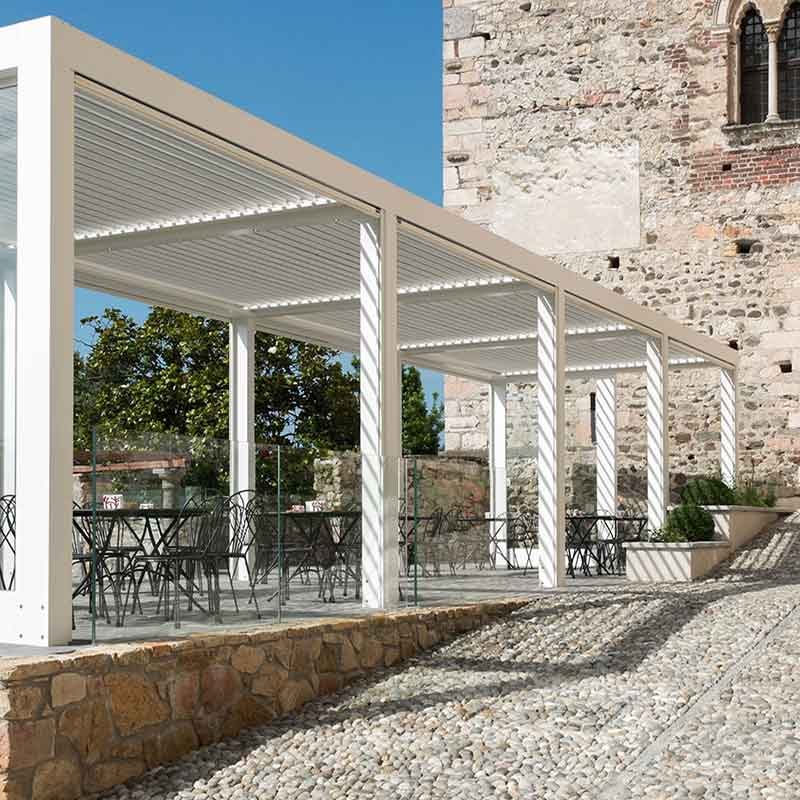
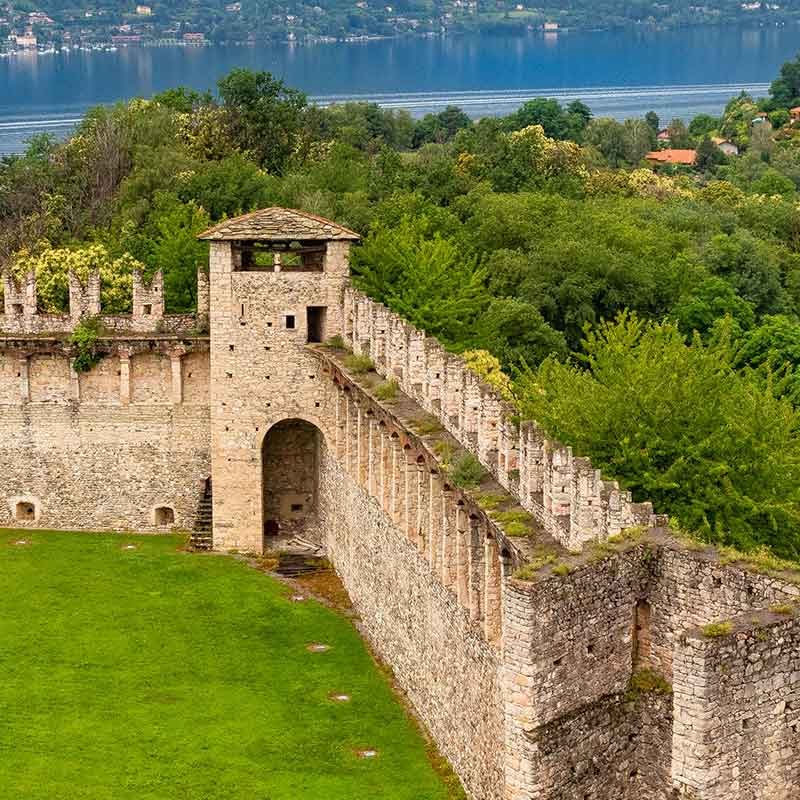
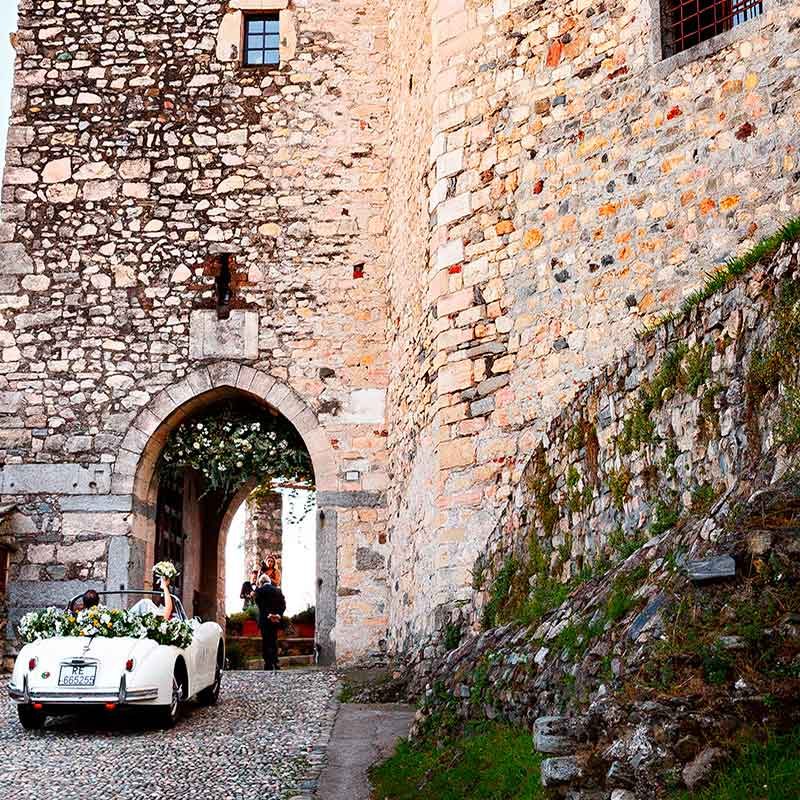
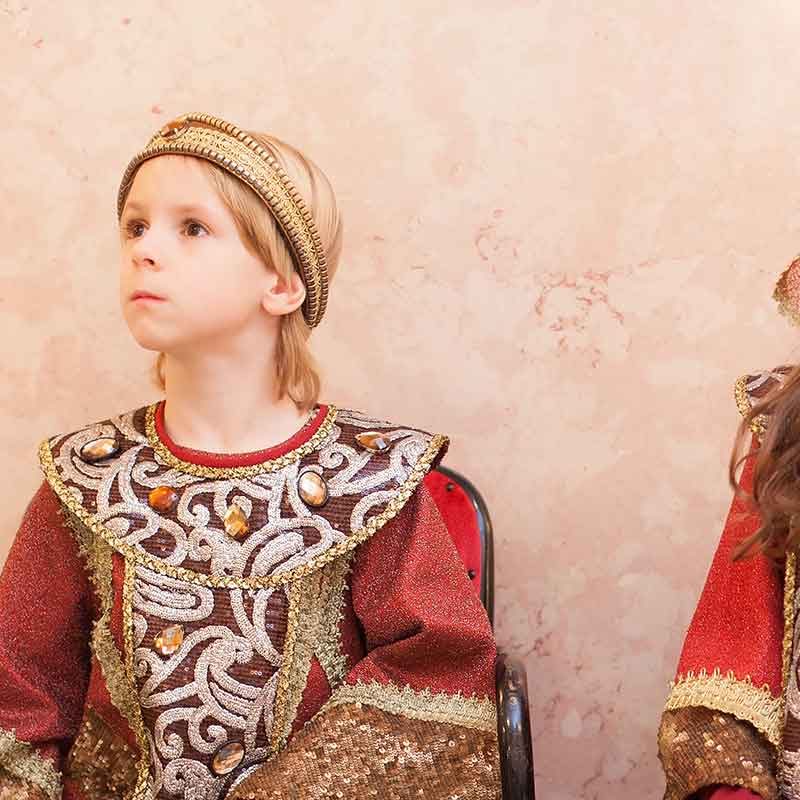
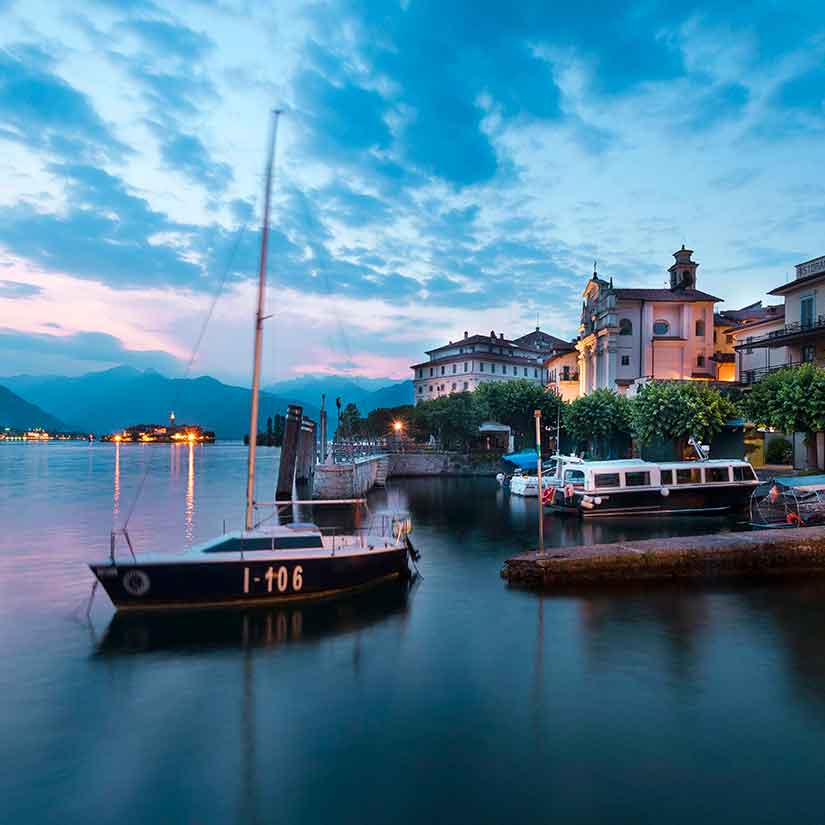






![Le previsioni per il prossimo weekend danno bel tempo!
.
Programmate una giornata all'Isola Bella: dopo la visita di Palazzo Borromeo con i suoi giardini, la terrazza del bistrot Fornello Bottega con Cucina è quello che ci vuole per un pranzo open-air vista lago, a base di prelibatezze italiane.
.
.
.
The weather forecast for next weekend is looking good!
.
It’s time to plan your day at Isola Bella. After visiting Palazzo Borromeo [Borromeo Palace] with its gardens; the terrace of the Fornello Bottega bistro and kitchen is the perfect place for an open-air lunch overlooking the lake. Here you can sample a range of Italian delicacies.
#terreborromeo #lakemaggiore #lagomaggiore #borromeoexperience #stresa #isolabella #gourmet #italianrestaurant](https://borromee.vivastaging.com/wp-content/plugins/instagram-feed-pro/img/placeholder.png)